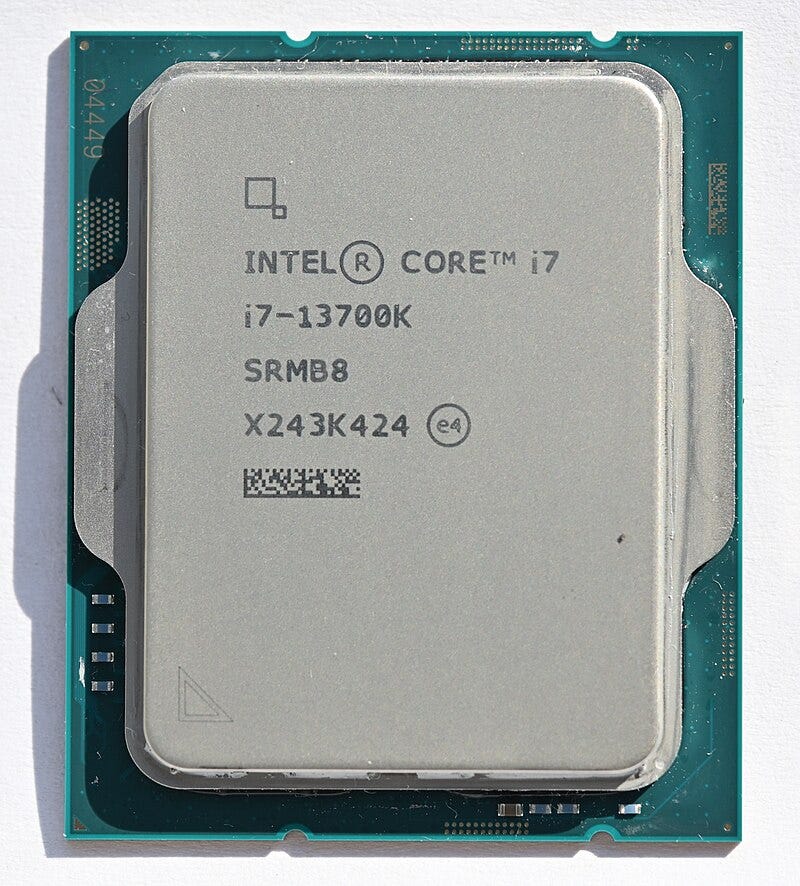Extensive Analysis of the Raptor Lake CPU Bug
Introduction
Intel’s Raptor Lake CPUs, which form part of the 13th and 14th generation Intel Core desktop processor line, were celebrated for their hybrid architecture combining high-performance cores with efficiency cores. However, shortly after their release, a critical bug emerged that has led to system instability and, in some cases, permanent degradation of the affected chips. This extensive analysis examines the origins of the bug, its technical underpinnings, the mitigation strategies implemented by Intel, and the overall impact on the industry.
Background
Raptor Lake processors were designed to push the limits of performance while maintaining efficiency, built on Intel’s Intel 7 process technology and designed for the LGA 1700 socket. Early reports indicated that under certain workloads – notably in high-stress environments such as gaming and content creation – the CPUs would unexpectedly crash or exhibit erratic behavior. Initial suspicions ranged from overclocking issues to motherboard power delivery configurations. However, further investigation revealed that the problem was more deeply rooted in the processor’s microcode.
The Bug and Its Impact
The central issue, now known as “Vmin Shift Instability,” stemmed from a flaw in the microcode algorithm embedded in the Raptor Lake CPUs. Under certain conditions, the processor would request an excessive amount of voltage during idle or light-load activities. This overvoltage condition, particularly when combined with high operating temperatures, led to a phenomenon where parts of the CPU’s internal clock tree circuit were prematurely aged or damaged. The instability manifested in the form of frequent crashes, blue screens, and overall unreliable system behavior. Users reported that even systems that initially operated normally began to degrade over time, suggesting that the bug not only caused immediate instability but also had long-term repercussions on chip longevity.
Technical Analysis
Intel’s extensive investigation pinpointed the root cause to several interrelated factors. First, certain motherboard power delivery settings were found to exceed Intel’s recommended specifications, exacerbating the voltage issue. Additionally, a flawed microcode algorithm meant that even in scenarios where the processor was not under heavy load, the CPU could still draw excessive power. Intel identified that the bug primarily affected desktop chips with a Thermal Design Power (TDP) of 65 watts or higher. The analysis revealed that the elevated operating voltages caused a shift in the minimum operating voltage (Vmin) of the chip, which in turn led to a misalignment in the internal clock signals—a problem critical enough to force system instability.
Mitigation Strategies
In response to the bug, Intel has implemented several layers of mitigation. The company released a series of microcode updates – including microcode versions 0x125 and 0x129 – that were distributed to motherboard manufacturers through BIOS updates. These updates are designed to restrict the voltage levels requested by the processor, ensuring they remain within the safe operating range specified by Intel. A more comprehensive update, dubbed microcode 0x12B, is also on the horizon to address elevated voltage requests during idle and light workload scenarios. While these updates prevent further damage and help stabilize the processors for users who have not yet experienced irreversible degradation, they cannot repair CPUs that have already been compromised by prolonged exposure to excessive voltage.
Warranty and Customer Support
Recognizing the severity of the issue, Intel has taken steps to alleviate customer concerns by extending the warranty on affected processors by an additional two years. This extended warranty applies to both boxed (retail) and tray (OEM) versions of the affected Raptor Lake chips. For customers experiencing instability symptoms, Intel has recommended that they contact their system manufacturer or Intel customer support to initiate an RMA (Return Merchandise Authorization) process. This approach, while not a remedy for already damaged chips, provides a pathway for affected users to receive replacement processors.
Industry Impact and Future Outlook
The revelation of the Raptor Lake bug has had significant implications for Intel’s reputation and market position. The instability issues have not only affected consumer desktops but have also impacted high-end applications, including game server providers and content creation workstations. While Intel’s mobile processors have been largely spared from these problems, the desktop instability has fueled comparisons with AMD’s offerings, which have continued to gain ground in performance and reliability. Looking ahead, Intel’s commitment to future designs – as evidenced by upcoming architectures like Arrow Lake and Meteor Lake – suggests that the company is actively working to overcome the challenges exposed by the Raptor Lake bug. The lessons learned from this incident may drive changes in manufacturing processes and microcode design, aiming to prevent similar issues in subsequent generations.
Conclusion
The Raptor Lake CPU bug represents one of the most challenging issues in recent years for Intel, affecting thousands of desktop systems and highlighting the delicate balance between performance optimization and hardware reliability. Through a series of targeted microcode updates and extended warranties, Intel has sought to mitigate the problem and reassure its customer base. However, the long-term impact on chip longevity and the overall trust in Intel’s product quality remains a critical area of concern for both consumers and industry analysts. The ongoing evolution of processor design, combined with the lessons learned from the Raptor Lake experience, will likely shape Intel’s strategies in its quest to reclaim its leadership in the competitive semiconductor market.
References
Intel’s "Raptor Lake" Desktop CPU Bug: What to Know, What to Do Now
https://www.pcmag.com/explainers/intels-raptor-lake-desktop-cpu-bug-what-to-know-what-to-do-now
Intel Preps Another Patch to Stop Raptor Lake CPU Voltage Bug
https://www.pcmag.com/news/intel-preps-another-patch-to-stop-raptor-lake-cpu-voltage-bug
Intel Addresses Desktop Raptor Lake Instability Issues
https://www.anandtech.com/show/21484/intel-raptor-lake-instability-faults-voltage-microcode-fix-in-august
Intel says its Raptor Lake crashing chip nightmare is over
https://www.theverge.com/2024/10/4/24262287/intel-13th-14th-gen-crash-raptor-lake-root-cause-fix
Intel chip bug FAQ: Which PCs are affected, how to get the patch, and everything else you need to know
https://www.zdnet.com/article/intel-chip-bug-faq-which-pcs-are-affected-how-to-get-the-patch-and-everything-else-you-need-to-know
Intel CPU Crashing Bug Affects Many More Chips Than We Thought
https://www.extremetech.com/computing/intel-cpu-crashing-bug-affects-many-more-chips-than-we-thought


